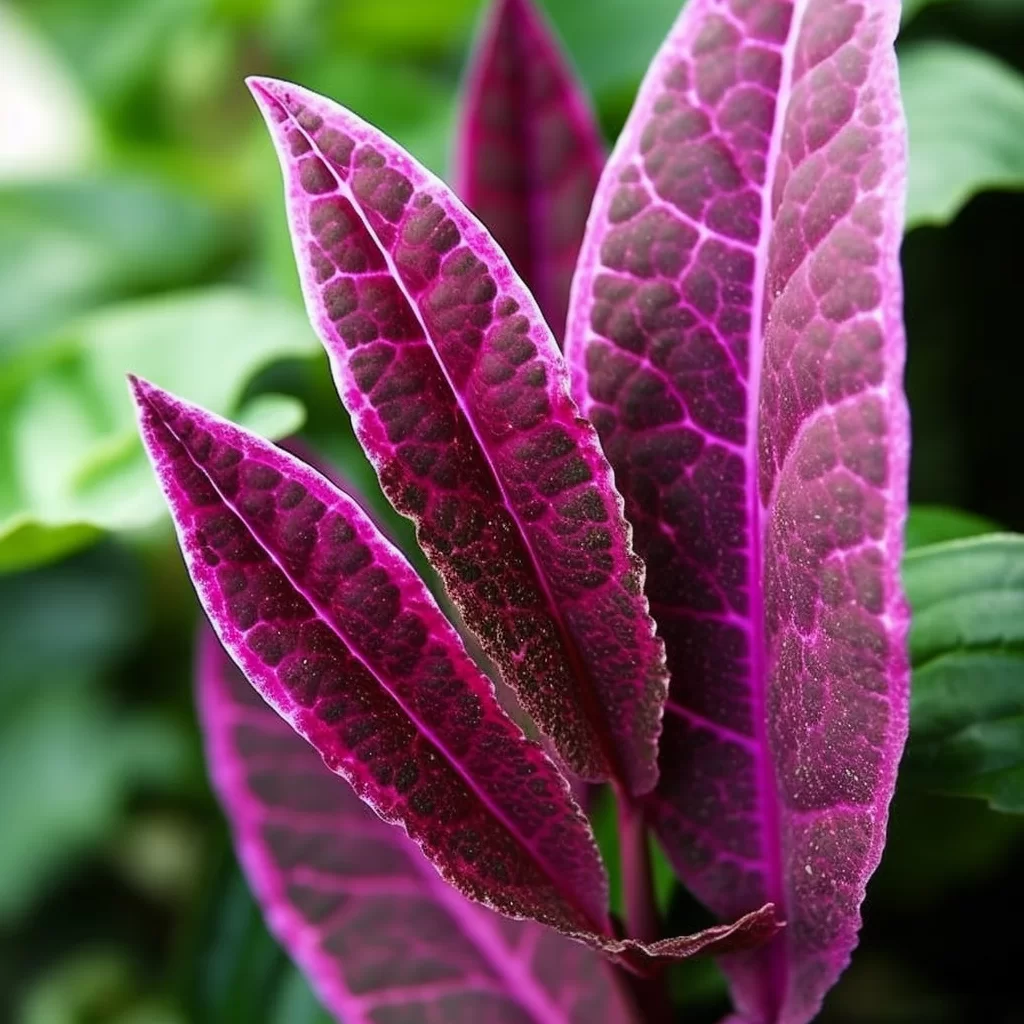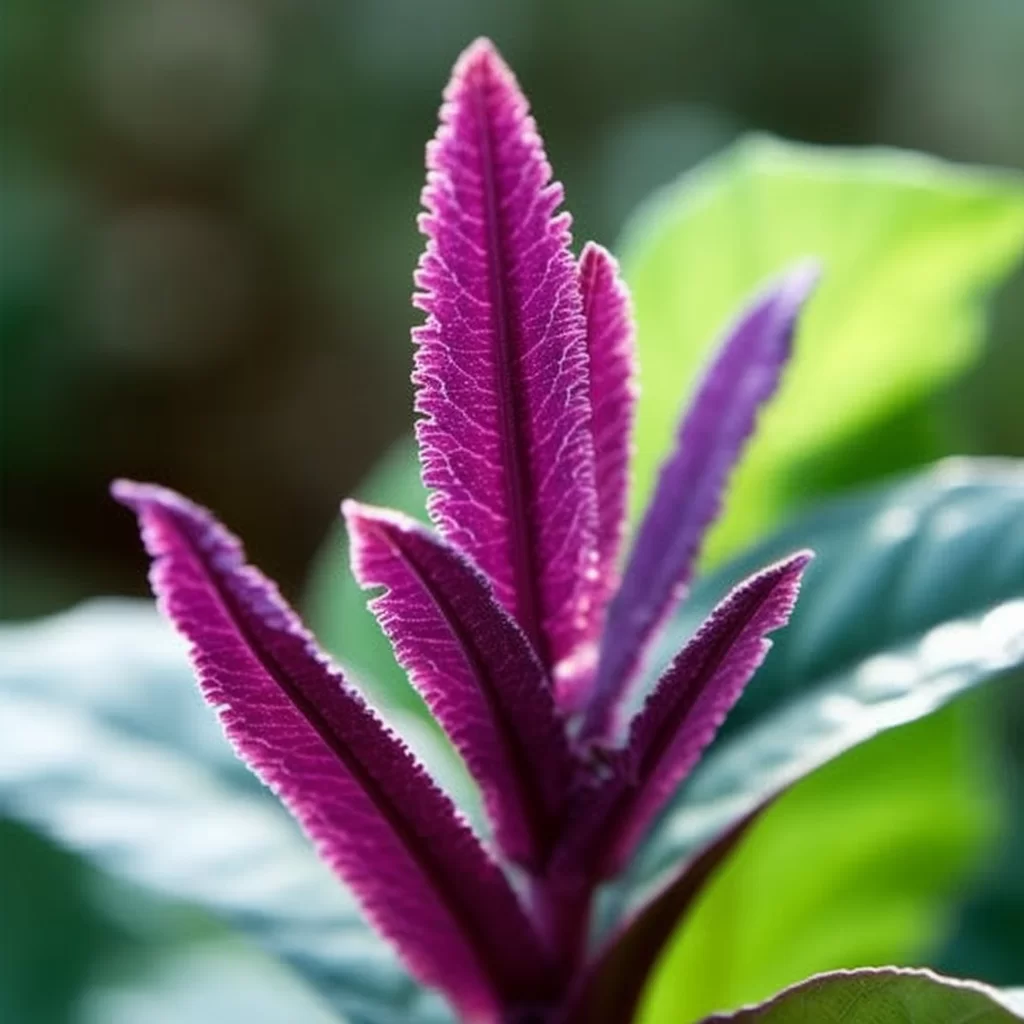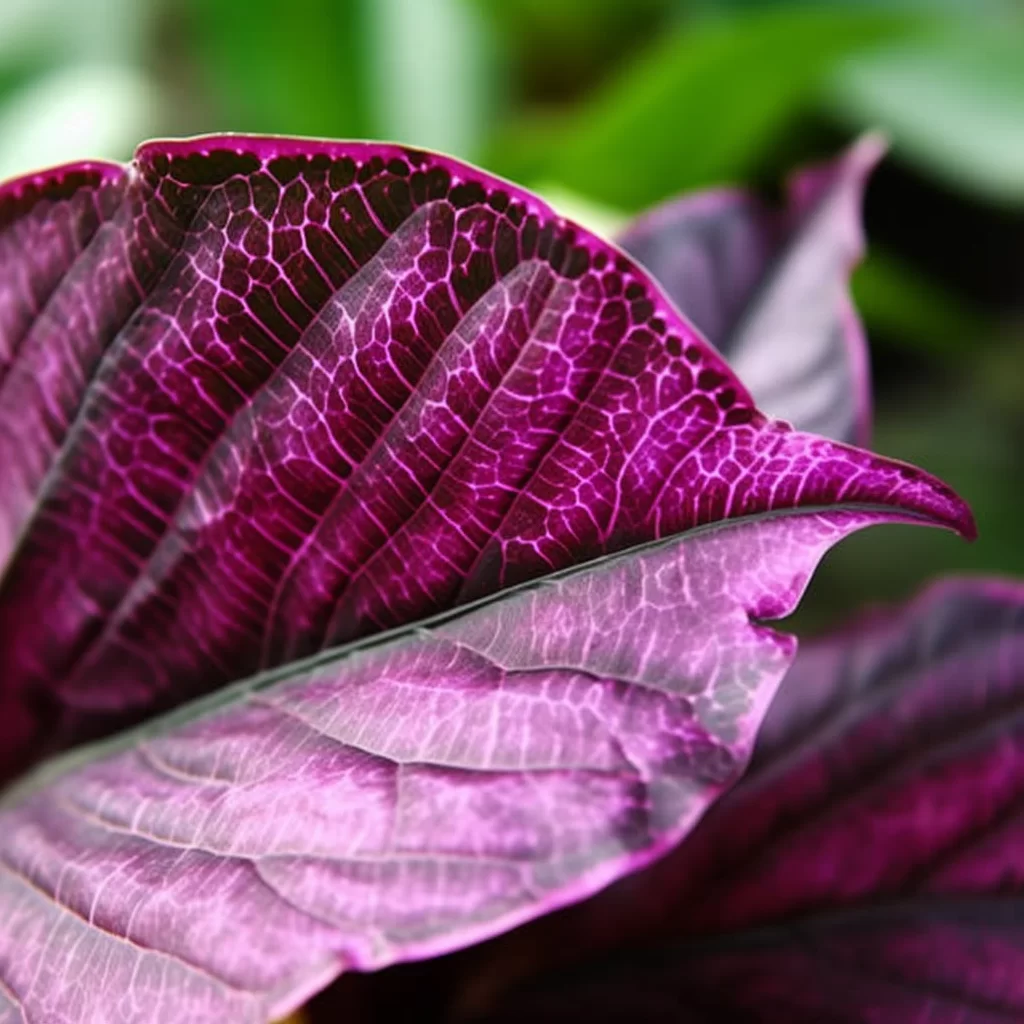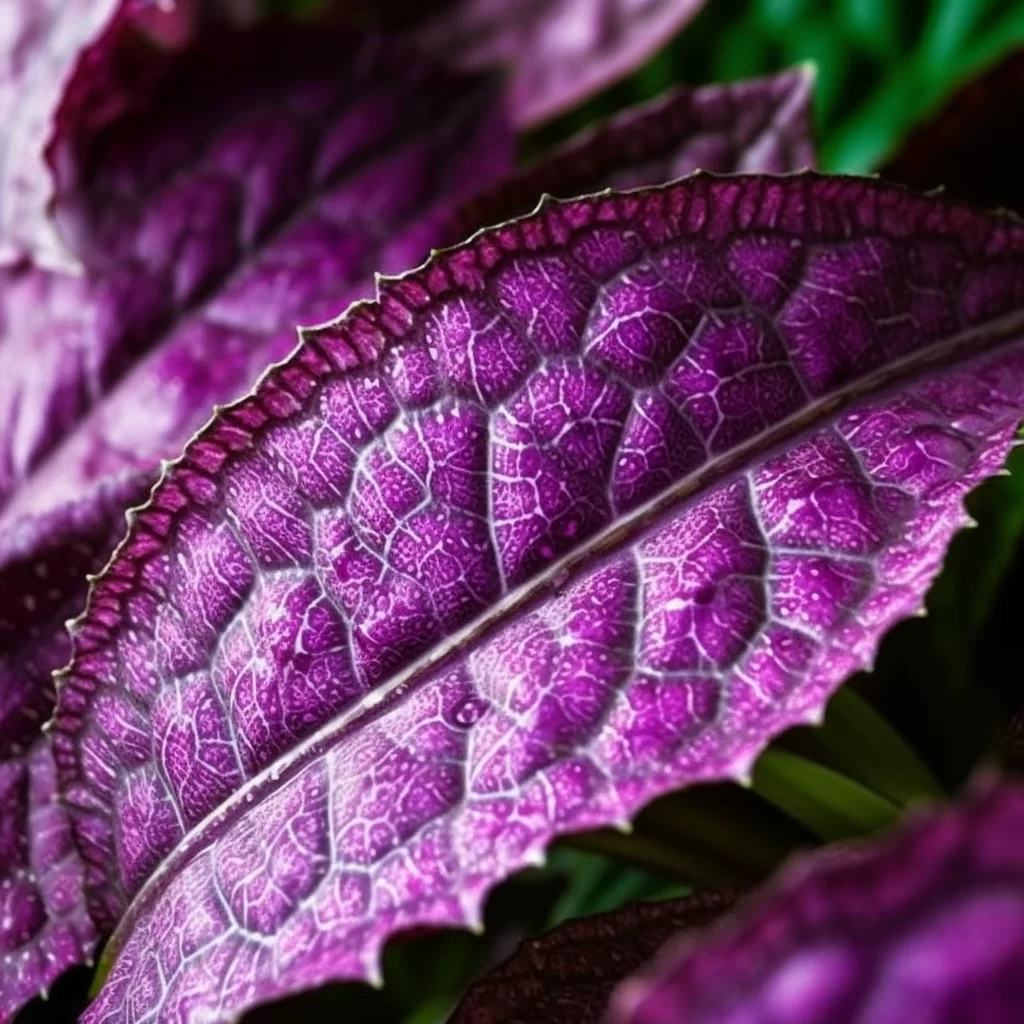Story of Day :
Contents
The Purple Shield Plant: A Complete Guide and Care Tips
If you’re someone who’s searching for a plant that will not consume much of your time in taking care, then the purple shield plant is worth checking out.
This stunning foliage plant is an excellent addition to any indoor or outdoor space because of its vivid and deep purple leaves that can give an extra edge to the aesthetics of your home or garden.
Not only does it enhance the visual appeal of any area, but it also requires minimal maintenance, making it a perfect pick for busy individuals.The coloration of this plant’s leaves is one feature that sets it apart from other plants.
The striking deep purple hue adds drama and intensity to any location where it thrives in.
This characteristic makes this foliage type highly sought after by those who not only want their plants thriving but also look great too – all without requiring too much effort on their part!
What is a Purple Shield Plant?
The purple shield plant, also called Persian shield, is a beautiful tropical perennial that originates from Myanmar.
It belongs to the acanthus family, which is made up of an array of plant species seen in tropical and subtropical regions across the globe.
The stunningly vibrant foliage of this plant can range from shades of deep blue to bright purple with iridescent silver markings on its leaves. The Persian shield’s natural habitat includes hot and humid environments such as rainforests, so it prefers warm temperatures and plenty of humidity to thrive.
The Persian shield’s natural habitat includes hot and humid environments such as rainforests, so it prefers warm temperatures and plenty of humidity to thrive.
This lovely plant isn’t just admired for its appearance; it’s also highly valued for its medicinal properties.
In traditional Burmese medicine, different parts of the plant are used to treat various ailments such as headaches or fever.
Overall, this striking plant serves not only as a beautiful decorative element but also possesses useful healing properties that have been recognized for centuries in its native land.
The purple shield plant is a unique and eye-catching species known for its striking leaves.
These leaves are the most remarkable feature of this plant, and they can grow up to six inches in length.
With their heart-shaped design, they stand out from other plants in a garden or indoor space.
The metallic sheen on the surface of these leaves gives them an almost painted appearance with shades of purple, green, and silver adorning them perfectly.If you’re looking for an eye-catching plant to add some color to your garden or living space, then the purple shield plant is definitely worth considering.
Not only are its large heart-shaped leaves attention-grabbing but their metallic sheen adds depth and vibrancy that few other plants can match.
You’ll be sure to impress all your guests with this unique addition whether it’s placed in a pot on your balcony or planted among other foliage in your garden bed.
Care Tips for Purple Shield Plants

Purple shield plants, also known as Persian shield, are a popular choice amongst plant enthusiasts due to their vibrant purple leaves.
These plants are fairly low maintenance and easy to care for but they do require some specific growing conditions in order to thrive.
To ensure that your purple shield plant looks its best, it’s important to provide it with bright but indirect light and consistently moist soil.
They prefer warm temperatures and can be sensitive to cold drafts so make sure you keep them away from any windows or doors that may let in a chill.If you’re looking at adding a purple shield plant to your collection, there are a few things you should keep in mind when caring for them.
Firstly, regular pruning is key – trimming back any leggy growth will encourage the plant to grow bushier and more compact.
Secondly, these plants benefit from occasional fertilization during their active growing season (spring through summer).
Lastly, be mindful of pests such as spider mites which can affect the leaves if left unchecked.
With these tips in mind, your purple shield plant will flourish into an eye-catching addition to any space!
If you’re looking for a vibrant and easy-to-care-for plant, the Persian shield might be just what you need.
These plants thrive in bright but indirect light, making them perfect for a spot near an east-facing window or in an area with filtered sunlight.
It’s important to keep their soil consistently moist without getting it overly wet, so make sure to water them when the top inch or two of soil feels dry.
Additionally, feeding your Persian shield once every month during spring and summer with a diluted all-purpose liquid fertilizer can help it grow beautifully.
These plants prefer high humidity levels, so setting up pebble trays filled with water beside them can keep them happy and healthy.When it comes to potting your Persian shield, use well-draining potting mix enriched with organic matter to create the best growth environment possible.
You should also take care to ensure that they’re grown in temperatures between 60°F and 85°F to promote healthy growth.
With these simple tips on light requirements, watering frequency, fertilizer needs, humidity preferences, potting mix selection and temperature ranges for growing conditions – taking care of your Persian shield will be easy-peasy-lemon-squeezy!
Propagation
If you’re looking to expand your collection of Persian shield plants, there are a couple of ways to do so.
You can either take stem cuttings or use layering techniques.
To take stem cuttings, it’s important to have a clean pair of scissors and find a healthy stem that is at least 6 inches long.
Once you’ve snipped the stem, make sure to remove any leaves on the bottom two-thirds before dipping it into rooting hormone powder.
Afterward, simply plant the cutting in damp potting soil and wait for new roots and growth.Layering is another method for propagating Persian shield plants and involves bending one of its branches down towards the soil level while still attached to the mother plant.
Secure this branch into place by making small cuts into its bark or using wire ties until it’s able to grow roots down into the soil below.
Once established, simply detach this new plant from its parent and transfer it over to a new container with fresh soil where it can continue growing healthily!
When it comes to plants, pests and diseases are two of the most common problems that gardeners encounter.
Pests can range from small insects like aphids and mites to larger critters like rodents and deer.
These pests can damage leaves, stems, fruit, and even the roots of plants.
Diseases are caused by fungi, bacteria, or viruses that infect plants.
They can cause a variety of symptoms such as leaf spots, wilting or yellowing leaves, stunted growth or death of the plant. Preventing and managing pest and disease issues is crucial for maintaining healthy plants in your garden.
Preventing and managing pest and disease issues is crucial for maintaining healthy plants in your garden.
Gardeners should keep their gardens clean by removing dead or infected plant material regularly.
Providing proper care such as watering appropriately and fertilizing correctly will also help to keep plants strong enough to resist disease attacks.
If pest or disease problems do occur, there are a variety of methods that gardeners can use to control them including using natural predators like ladybugs or releasing beneficial nematodes into soil to fight off harmful pests.
In some cases where severe infestations have occurred chemical pesticides may be necessary but should only be used as a last resort due to potential harm they may cause not only on pests but also beneficial organisms in the soil ecosystem which could lead further imbalances in future growing seasons if misused repeatedly over time .
Persian shield plants are quite resilient to pests, which is fantastic news for plant enthusiasts.
However, it is still possible for them to experience an infestation of spider mites or aphids.
These tiny creatures can prove devastating to a plant’s health, so it’s crucial to keep a watchful eye over your Persian shield and quickly isolate any plant showing signs of pest infestation.
Doing so will minimize the chances of spreading the problem throughout your garden and prevent further damage.While it may be disheartening to discover that your Persian shield has contracted pests, there is no need to panic.
With adequate care and attention, these issues can easily be resolved without affecting the rest of your garden.
The first step in tackling a pest problem is identifying its source early on before things get out of hand.
Once you spot any signs of spider mites or aphids on your Persian shield plant, take immediate steps like isolation measures as well as using natural pesticides or insecticidal soap sprays recommended by experts in order not only eliminate pests but also prevent future outbreaks from occurring in other plants around it too!
To sum it all up, the information presented in this article sheds light on a variety of topics.
It provides insight into the current state of affairs in various fields, such as technology and healthcare.
It highlights emerging trends and developments that have the potential to shape our future.
Additionally, it touches upon issues that are relevant to society today, including climate change and social justice.Overall, this piece offers a comprehensive look at some of the most pressing issues facing us today.
It presents both challenges and opportunities for growth and improvement.
By staying informed about these topics, we can be better equipped to make informed decisions about how we live our lives and create a better world for ourselves and future generations.
Are you tired of high-maintenance plants that require constant attention? If so, consider adding a purple shield plant to your indoor or outdoor space.
Not only does this stunning perennial have striking foliage that adds some drama to your decor, but it’s also incredibly easy to care for.
Whether you’re a seasoned plant parent or just starting out, the purple shield plant is sure to thrive and catch everyone’s eye.The beauty of the purple shield plant lies not only in its aesthetic appeal but also in its low-maintenance nature.
This resilient perennial can tolerate a wide range of conditions, including low light and infrequent watering.
With its ability to adapt quickly and easily, it’s no wonder why this stunning plant has become a popular choice among homeowners and gardeners alike.
So if you’re looking for an effortless way to add some color and life into your space without all the fuss, consider adding a purple shield plant today!